How to Distinguish from Similar Species:Polinices draconis is a large subtidal species that does not have a large callus that partly covers the umbilicus, so the umbilicus is about 1/3 the diameter of the shell. It is found mainly in California. Euspira pallida (formerly Polinices pallidus) grows only to around 3 cm diameter and has only 4-5 whorls. It may be whitish, grayish brown, or cream.
Geographical Range: Ketchikan, Alaska to Baja California, Mexico
Depth Range: Intertidal and subtidal to 50 m
Habitat: Abundant on mud flats and silty sand, soft bottoms subtidally.
Biology/Natural History: This snail, which is one of the largest to be found intertidally in the Northwest, is an active foraging predator on mud flats and sandy bottoms. When the animal is fully expanded out of its shell it is so large that it covers almost the entire shell and looks as if it couldn't possibly fit into the shell. Much of the expansion is due to the uptake of water, however, and if the animal is gently disturbed it will slowly release water from sinuses in the mantle and foot and contract into its shell, finally closing a horny operculum. It does not usually stay inside the shell long because it cannot breathe. It crawls across sandflats and mudflats with its huge foot partly extended in front of the shell like a snowplow, pushing through the sediments in search of clams. It may burrow at least 10 cm into the sand. Bivalve prey include Mya truncata,Tresus capax, Saxidomus gigantea, and Protothaca staminea clams but don't seem to seek out cockles Clinocardium nuttallii which are found in the same areas, probably because their shells are thicker. The moon snail can bore about 1/2 mm per day. Some clams are found with characteristic, "countersunk" drill holes through the shell made by the radula; while with others the snail seems to simply surround the clam with its enormous foot and wait until the clam suffocates enough to open up. Predators on Euspira lewisii include the sunflower star Pycnopodia helianthoides. It quickly withdraws its foot when it contacts Pycnopodia. Enteroctopus dofleini may be another predator, and the moon snails themselves may sometimes be cannibalistic. Eggs are laid in a distinctive gelatinous coil or collar shaped as if it were formed around the top of a canning jar. The egg mass is a firm gelatin with thousands of embedded eggs. Sand is also embedded in the mass, giving it a sandy texture. The coil is left on the sand. Eggs hatch into free-swimming, nonfeeding veliger larvae in midsummer. Males are smaller than females, and females can live up to 14 years.
Shells from these snails are abundant in shell middens left by native
Americans. The species can become toxic if they consume toxic clams
during a red tide. They are also a favorite shell for large hermit
crabs such as Pagurus
armatus.
| Return to: | |||
| Main Page | Alphabetic Index | Systematic Index | Glossary |
References:
Dichotomous Keys:Flora and Fairbanks, 1966 (as Polinices lewisii)
Kozloff 1987, 1996 (as Polinices lewisii)
Smith and Carlton, 1975 (as Polinices lewisii)
General References:
Brusca
and Brusca, 1978 (as Polinices lewisii)
Carefoot,
1977 (as Polinices lewisii)
Harbo,
1997
Harbo,
1999
Hinton,
1987 (as Polinices lewisii)
Johnson
and Snook, 1955 (as Polinices lewisii)
Kozloff,
1993 (as Polinices lewisii)
McConnaughey
and McConnaughey, 1985 (as Polinices lewisii)
Morris,
1966 (as Polinices lewisii)
Morris
et al, 1980 (as Polinices lewisii)
Niesen,
1994 (as Polinices lewisii)
Niesen,
1997 (as Polinices lewisii)
O'Clair
and O'Clair, 1998
Ricketts
et al., 1985 (as Polinices lewisii)
Sept,
1999 (as Polinices lewisii)
Snyderman,
1988 (as Polinices lewisii)
Scientific Articles:
Page, Louise R., and Roberta V. K. Pedersen, 1998. Transformation
of Phytoplanktivorous Larvae into Predatory Carnivores during the Development
of Polinices lewisii (Mollusca, Caenogastropoda). Invertebrate
Biology 117(3): 208-220
Peitso, E; Hui, E; Hartwick, B; and Bourne, N, 1994. Predation
by the naticid gastropod Polinices lewisii (Gould) on littleneck
clams Protothaca staminea (Conrad) in British Columbia. Canadian
Journal of Zoology 72(2): 319-325
TRAINER,
VERA L., BICH-THUY L. EBERHART, JOHN C. WEKELL, NICOLAUS G. ADAMS,
LINDA HANSON, FRANK COX, AND JUDY DOWELL, 2003. PARALYTIC SHELLFISH
TOXINS IN PUGET SOUND, WASHINGTON STATE. Journal of Shellfish Research
22(1): 213-223
Bernard, F.R., 1967. Studies on the biology
of the Naticid clam drill Polinices lewisi (Gould) (Gastropoda Prosobranchiata).
Technical report (Fisheries Research Board of Canada) no. 42
Web sites:
General Notes and Observations: Locations, abundances, unusual behaviors:
We do not often see moon snails in the relatively exposed, rocky areas around Rosario but the individual below was found subtidally on silty sand just south of the station.
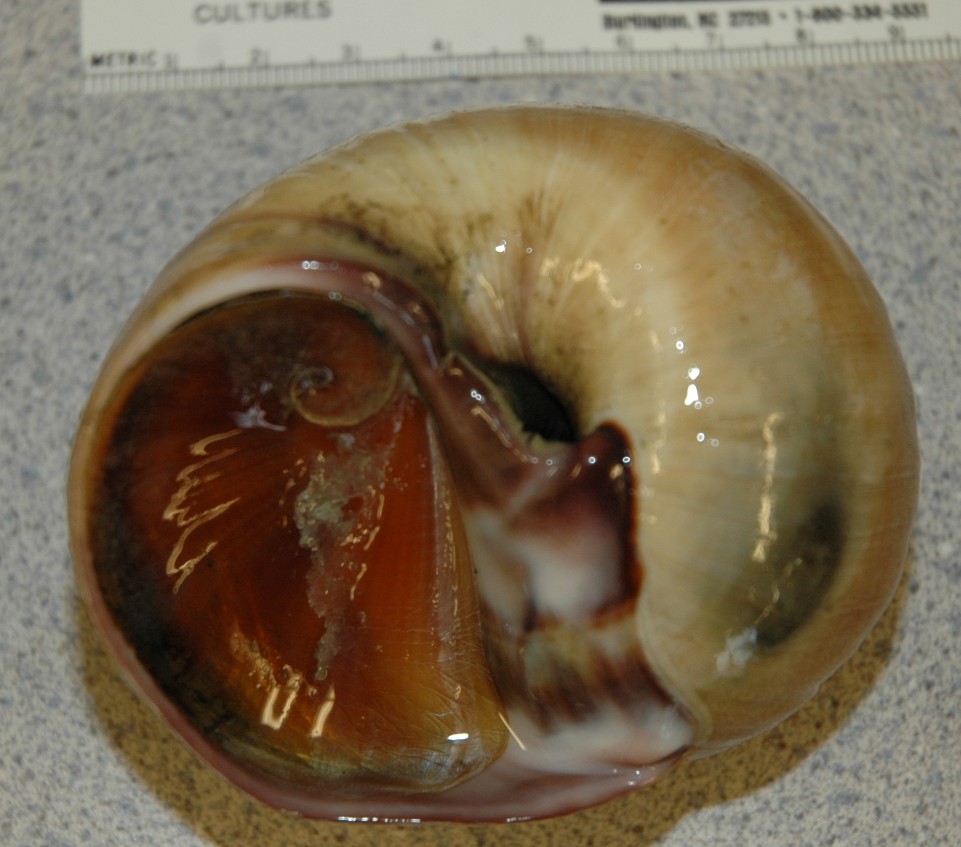
This is the same individual as above after being coaxed to close up
inside its shell. Note the horny operculum, and the large callus
which partly covers the umbilicus.
The shell of this individual is about 9 cm in diameter.
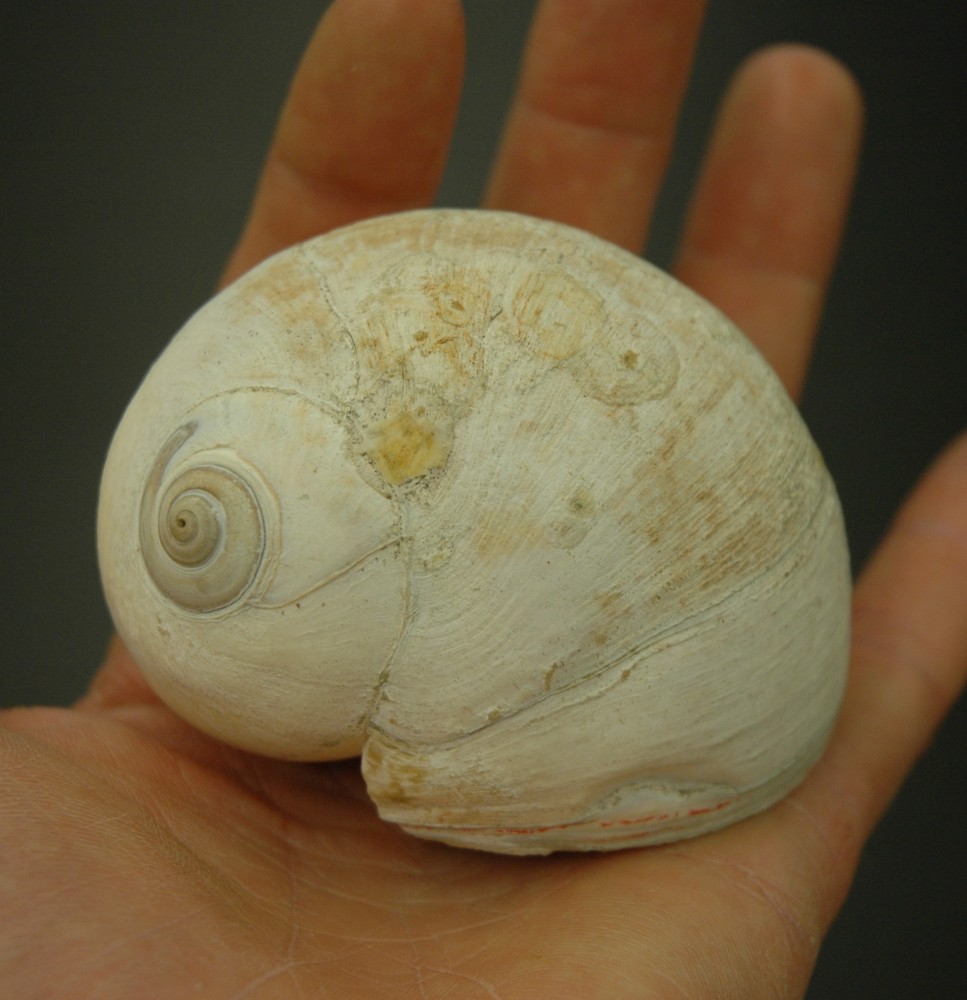 |
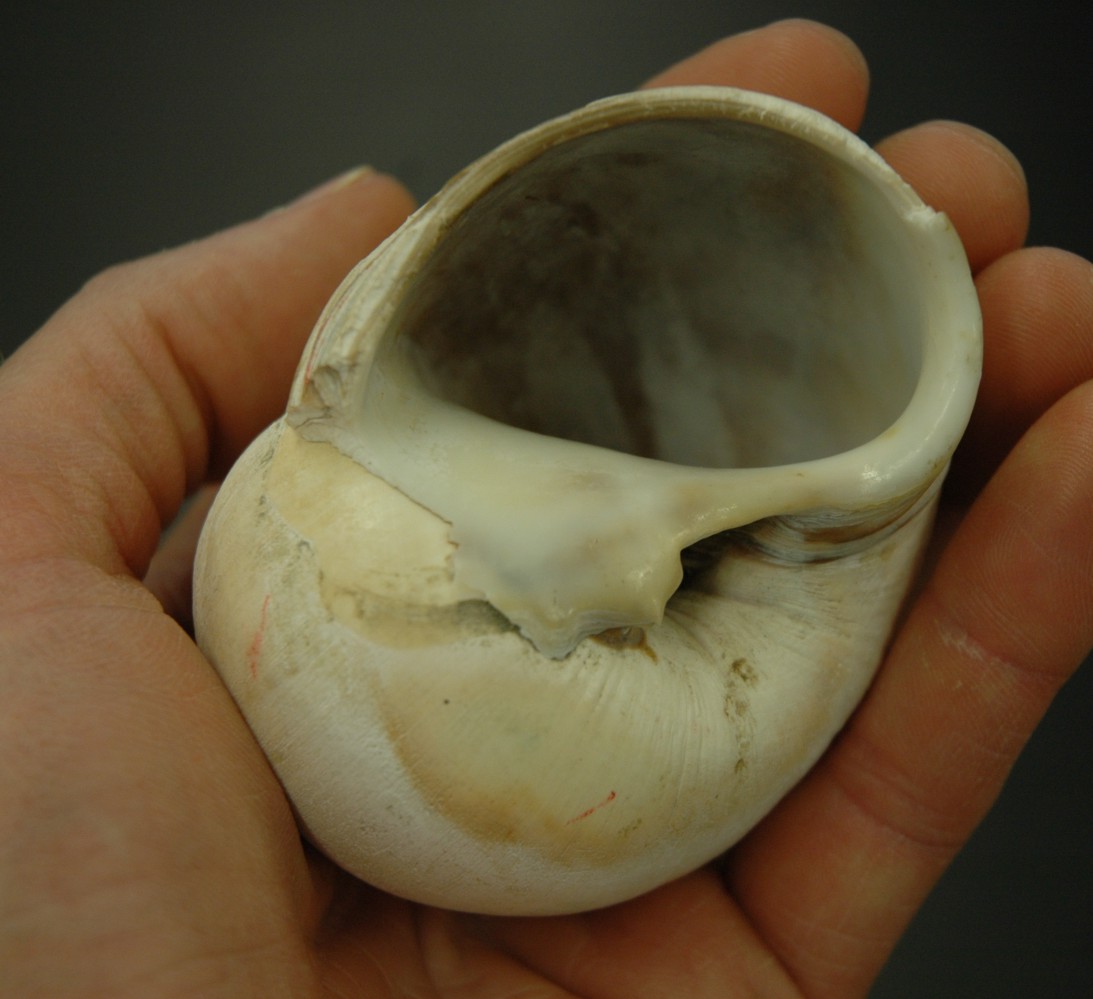 |
|
|
| The shell in the photos below is a very small empty shell, 1.7 cm height and 1.8 cm width, trawled from 135 m depth by benthic sled in San Juan Channel, July 2018. Stacked (high depth-of-field) photos by Dave Cowles | |
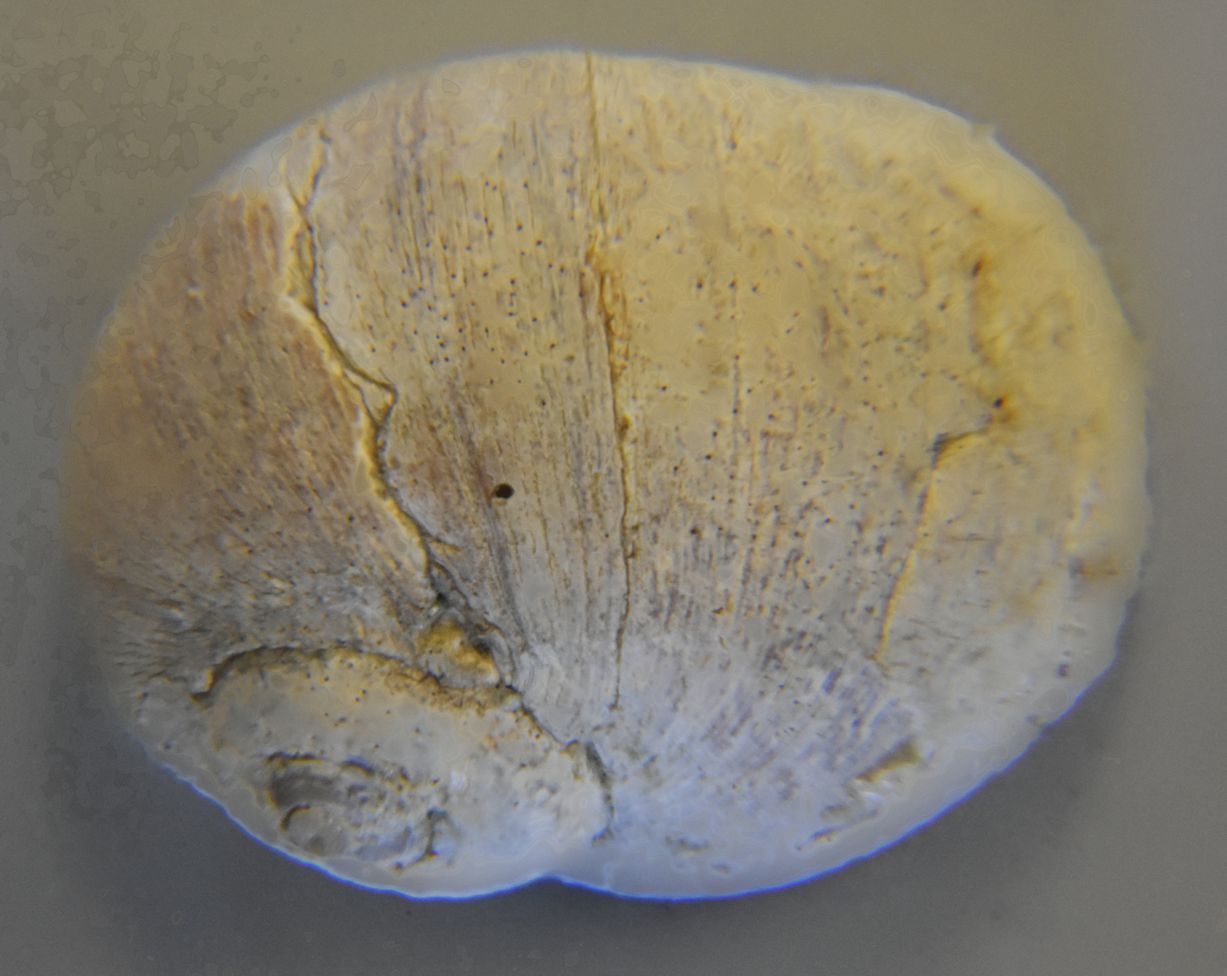 |
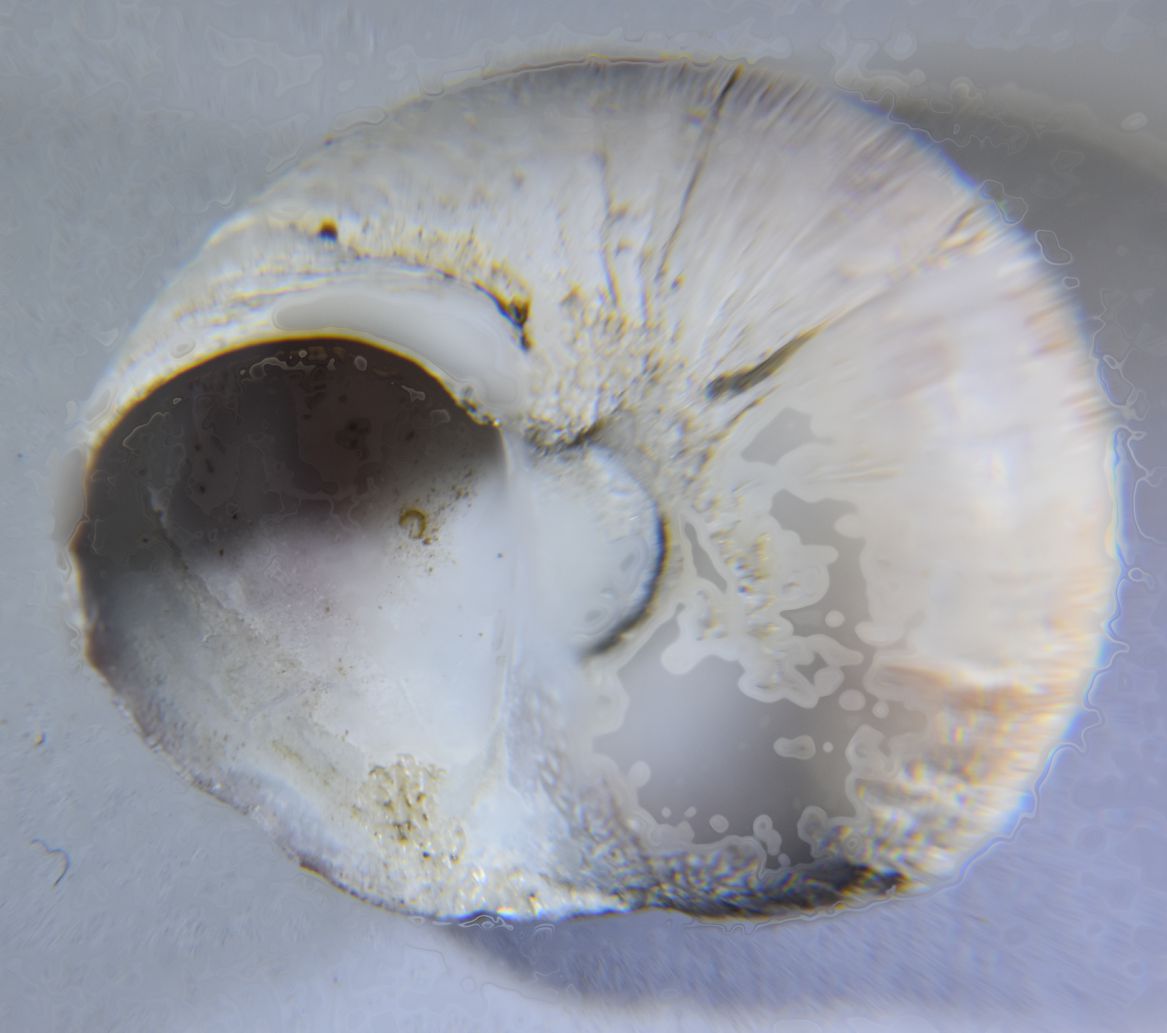 |
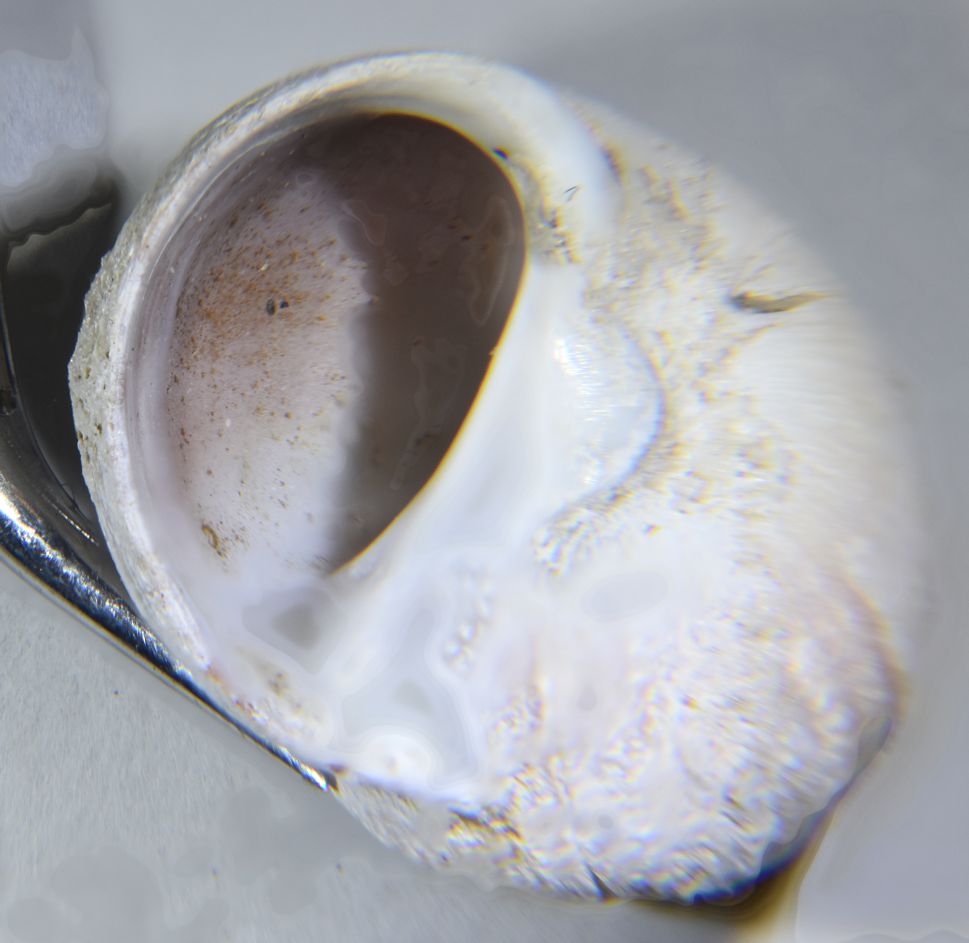 |
In the photo at left the porcellanous but not pearly inside of the shell can be seen, plus the callus on the columella that mostly obscures the umbilicus even at this very small size. |
Authors and Editors of Page:
Dave Cowles (2007): Created original page
Jonathan Cowles (2007): Updated page with CSS
